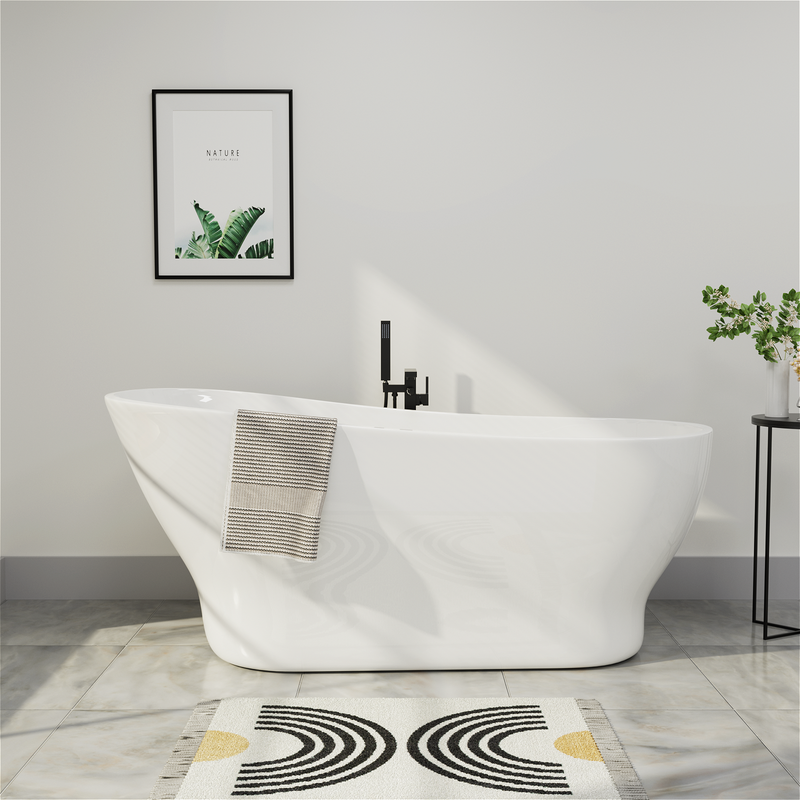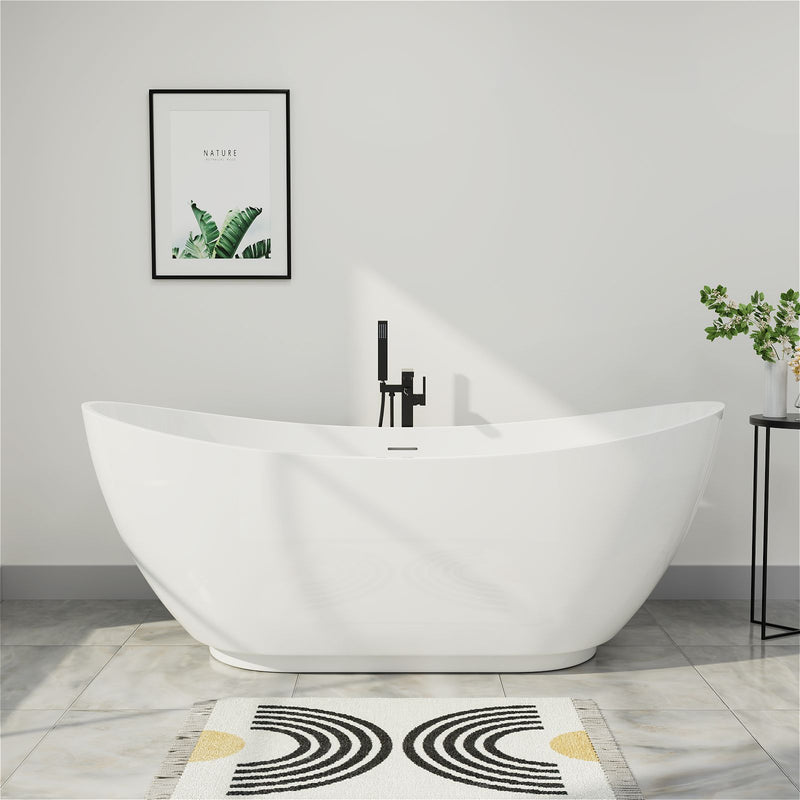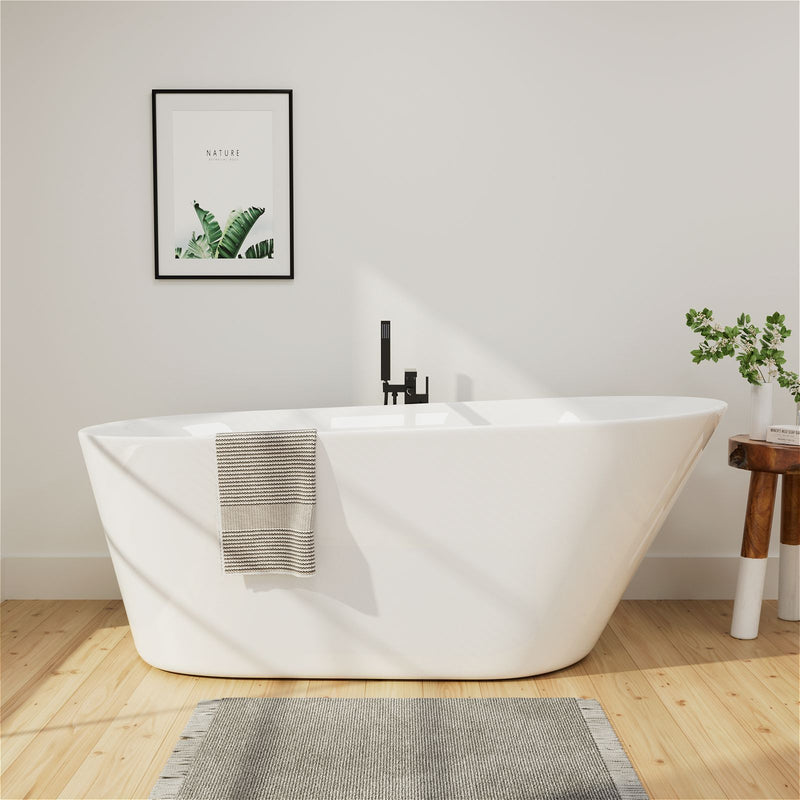For many homeowners, the bathtub serves as more than just a functional fixture—it's a personal retreat, a place to unwind after a long day, and a centerpiece of bathroom design. In recent years, acrylic soaking bathtubs have gained significant popularity across the United States, and for good reason. These tubs combine deep, comfortable soaking capabilities with practical benefits that suit modern lifestyles. Made from vacuum-formed sheets of acrylic reinforced with fiberglass, these tubs offer a compelling blend of warmth, durability, and visual appeal. Unlike cold, hard materials like cast iron or steel, acrylic feels warm to the touch and retains heat effectively, allowing for longer, more relaxing soaks. Additionally, the versatility of acrylic allows for a wide variety of shapes and sizes, making it easier to find a tub that fits both your space and your aesthetic preferences. Whether you're renovating a master bathroom or adding a tub to a guest suite, understanding the features, benefits, and considerations of acrylic soaking tubs can help you make an informed decision that you'll enjoy for years to come.
Why Choose an Acrylic Soaking Bathtub?
Acrylic stands out as a material for soaking bathtubs due to its unique combination of user-friendly qualities. One of the most immediate benefits is the warmth of the material. Unlike metal or porcelain surfaces that can feel cold at first touch, acrylic remains closer to room temperature, eliminating that initial shock when you step in. This characteristic also contributes to better heat retention; acrylic absorbs and holds the warmth of the water, allowing you to enjoy a longer bath without needing to add more hot water. This not only enhances comfort but can also lead to minor energy savings over time.

From a design perspective, acrylic is incredibly flexible in its manufacturing. It can be molded into a vast array of shapes, from classic rectangular and oval designs to more contemporary asymmetrical or corner-fitting models. This makes it easier to find a tub that complements your bathroom's layout and style. The material also supports a high-gloss, non-porous finish that is both visually appealing and hygienic. The smooth surface resists the growth of mold and mildew and is easy to clean with non-abrasive cleaners, helping maintain its like-new appearance with minimal effort.
Durability is another strong suit of quality acrylic tubs. While they are significantly lighter than cast iron alternatives—making them easier to install, especially in upper-floor bathrooms—they are engineered to be robust. The acrylic sheet is typically supported by a framework of fiberglass or wood, ensuring structural stability. Modern manufacturing techniques also include UV stabilization to prevent fading or discoloration over time, ensuring your tub remains an attractive part of your bathroom for many years. For households with children, the material's slight give offers a margin of safety, as it is less likely to chip or crack from minor impacts compared to harder materials.
Design and Configuration Options
When selecting an acrylic soaking bathtub, you'll encounter several design configurations, each suited to different needs and spaces. The most common type is the alcove tub, designed to be installed against three walls. This is a space-efficient option that works well in most standard bathroom layouts and is often paired with a shower system, making it a practical choice for shared bathrooms.
For those with more space or looking to make a design statement, a freestanding acrylic soaking tub is an increasingly popular option. These tubs are not attached to any walls and can be placed anywhere in the bathroom, provided the plumbing can be accommodated. Freestanding tubs often serve as a dramatic focal point and are available in a variety of styles, from classic clawfoot designs to modern, minimalist silhouettes. While traditionally made from heavy materials, advancements in acrylic manufacturing now allow for lighter freestanding models that retain the elegant look without the extreme weight.
Another option to consider is the drop-in tub. These are designed to be installed into a custom-built surround or deck, typically made of tile, stone, or wood. This allows for a built-in, customized look that can be tailored to match your bathroom's exact design. While the installation process is more complex, it offers a seamless and integrated appearance.
Beyond the installation style, consider the internal design of the tub. Soaking tubs are characterized by their greater depth, typically ranging from 18 to 24 inches, which allows for full immersion. The interior contour is also important; some models feature ergonomic designs with built-in lumbar support or sloped backs for enhanced comfort. The placement of the drain is another practical consideration; some modern designs offer offset drains to allow for a lower profile and even deeper soaking experience.
Installation and Maintenance Essentials

Proper installation is critical to the performance and longevity of an acrylic soaking tub. Due to their relatively light weight, these tubs can be more easily maneuvered into place than cast iron models, but they require a stable and perfectly level base. An uneven subfloor can cause the tub to flex under the weight of water and a person, potentially leading to stress cracks over time. Many professional installers recommend setting the tub in a bed of mortar or a specialized foam support to create a solid, full-contact foundation that prevents flexing and eliminates hollow spots that can cause cracking or creaking noises.
The plumbing hookup must also be planned carefully. For freestanding models, the floor-mounted faucet and drain require precise placement, often needing to be finalized before the tub is set in its final position. It's crucial to ensure that the plumbing components are compatible with the tub's design and that all connections are leak-free. For alcove or drop-in tubs, sealing the joints between the tub and the wall is essential to prevent water damage. A high-quality, mold-resistant silicone caulk is typically used for this purpose.
Maintaining an acrylic tub is straightforward, which is a significant part of its appeal. Regular cleaning with a soft cloth or sponge and a mild, non-abrasive cleaner is all that is usually needed to keep the surface looking pristine. Harsh abrasive cleaners or scrub pads should be avoided, as they can scratch the glossy finish, making it dull and more susceptible to staining. For everyday care, rinsing the tub with water after each use can help prevent soap scum and hard water deposits from building up. If stains do occur, a paste made from baking soda and water can be gently applied and rinsed away. Protecting the surface from sharp objects and using mats with non-abrasive suction cups will also help preserve its finish for the long term.
FAQs
Q: How does the heat retention of an acrylic tub compare to a cast iron tub?
A: Cast iron is renowned for its excellent heat retention due to its density and mass. However, high-quality acrylic tubs also offer very good heat retention properties. While they may not hold heat quite as long as cast iron, the material feels much warmer to the initial touch and still allows for a long, comfortable soak without the water cooling down too quickly.
Q: Is an acrylic soaking tub strong enough to support a larger person?
A: Yes, when installed correctly on a properly supported base, a quality acrylic tub is designed to be very strong and can typically support well over 300 pounds. The acrylic shell is reinforced with materials like fiberglass to ensure structural integrity. Always check the manufacturer's specified weight capacity for the specific model you are considering.
Q: Can an acrylic tub be repaired if it gets scratched or cracked?
A: Minor surface scratches can often be buffed out with a specialized acrylic polishing compound. For deeper scratches or hairline cracks, professional repair kits are available that involve filling and refinishing the area. While these repairs can be effective, it's always best to prevent damage through proper care and use.
Q: Are these tubs slippery when wet?
A: The smooth surface can become slippery. Many manufacturers now incorporate textured bottoms or offer optional anti-slip appliques to improve safety. For added security, a well-designed bath mat that is safe for acrylic surfaces can be used.
Q: What is the average lifespan of a quality acrylic soaking tub?
A: With proper installation and care, a good-quality acrylic tub can last 15-20 years or even longer. Its longevity is greatly influenced by avoiding abrasive cleaners, preventing structural flexing, and protecting it from sharp impacts.
Q: How does the cost compare to other materials like cast iron or stone resin?
A: Acrylic tubs generally occupy a middle ground in terms of cost. They are typically more affordable than high-end materials like copper, stone resin, or solid surface composites, but may be slightly more expensive than basic fiberglass models. They offer an excellent balance of value, performance, and aesthetics.
Conclusion
The acrylic soaking bathtub represents a smart convergence of comfort, practicality, and design for the modern homeowner. Its material advantages—including a warm feel, excellent heat retention, and a lightweight yet durable structure—make it a compelling choice for a wide range of bathroom projects. The variety of available designs, from space-saving alcoves to stunning freestanding centerpieces, ensures that there is an option to suit virtually any space or style preference. While proper installation is key to maximizing its lifespan, the ease of daily maintenance is a significant benefit for busy households. By offering a spa-like experience at home without the exorbitant cost or extreme weight of some other materials, an acrylic soaking tub is an investment that enhances daily routine and adds lasting value to your home.





